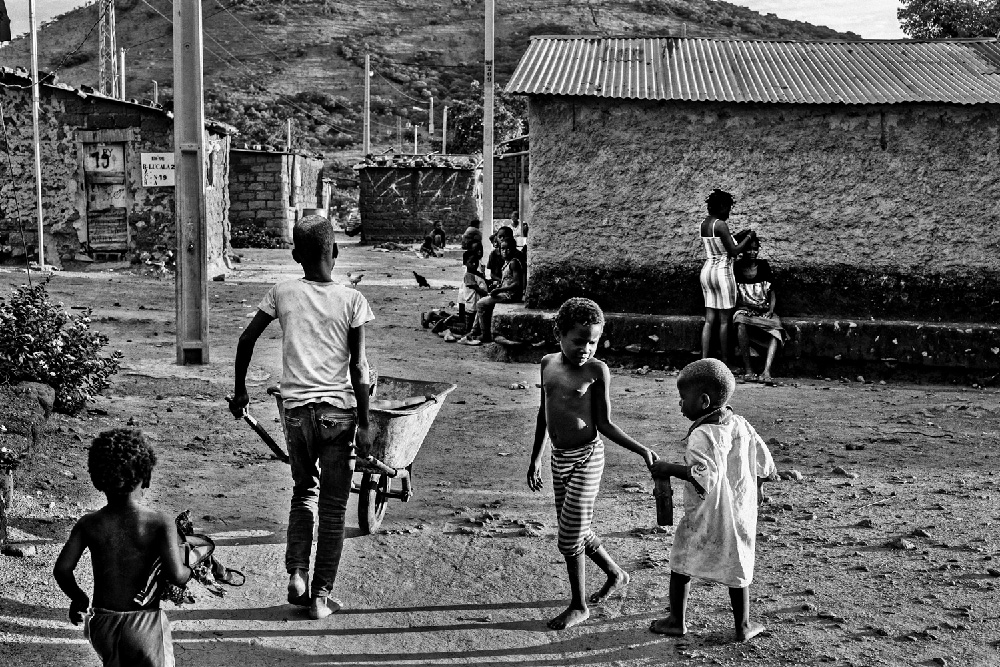Angola
Hidden Danger
CISR Journal
This article is brought to you by the Center for International Stabilization and Recovery (CISR) from issue 28.2 of The Journal of Conventional Weapons Destruction available on the JMU Scholarly Commons and Issuu.com.
By Sean Sutton [ Independent ]
The Journal of CWD (Summer 2024) · Angola Hidden Danger
Introduction
Lucala-2 is a small village in northern Angola with 750 residents, situated by a bridge crossing the Lucala River. This bridge gained strategic importance during the Angolan Civil War (1975–2002) as a critical crossing point. Throughout the war, minefields were tactfully laid at all four corners of the bridge, illustrating the extensive use of landmines that has continued to impact Angola. These mines remain a harrowing legacy, contributing to ongoing casualties and significantly hindering development efforts long after the war's conclusion. The community explained how they have been living in fear since the war ended in 2002.
The area's strategic importance during the war was due to the main road from Luanda heading east and northeast, leading to Lunda Sul and Lunda Norte, regions known for their key diamond mines, as well as the hydroelectric plants in Malanje. The bridge, crucial for access and control, was mined and became a focal point of conflict. Additionally, the Lucala river, flowing into the Kwanza river, added to the area's significance.
There were seven minefields around this area, forming a defensive layer about 10 kilometers deep. Landmines were integral to defenses and were widely and extensively used. Different militaries were here; in the 1980s Cuban forces were present alongside People’s Armed Forces of Liberation of Angola (FAPLA), later succeeded by Angola Armed Forces (FAA). National Union for the Total Independence of Angola (UNITA),1 a key former political and military organization during the Angolan Civil War, took the bridge and most of the province after heavy fighting in 1992. They held it for two years. UNITA was supported by foreign allies and opposed the MPLA-led government, playing a significant role in the conflict until it transformed into a political party after the war ended in 2002.
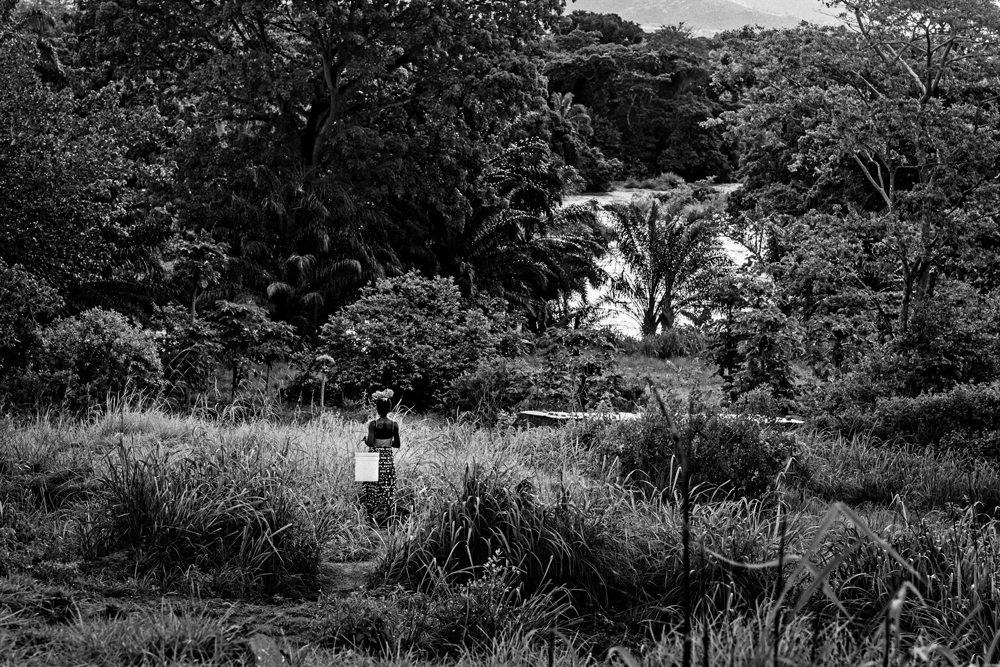
Hidden Dangers
These images capture the daily life in Lucala-2 during November and December 2023, just as the air begins to cool in the evening. The village is situated just a couple hundred meters from the minefield. Children play near an old tank in the evening light. Norwegian People's Aid (NPA) teams cleared hundreds of explosive munitions from one of the abandoned tanks in the village.
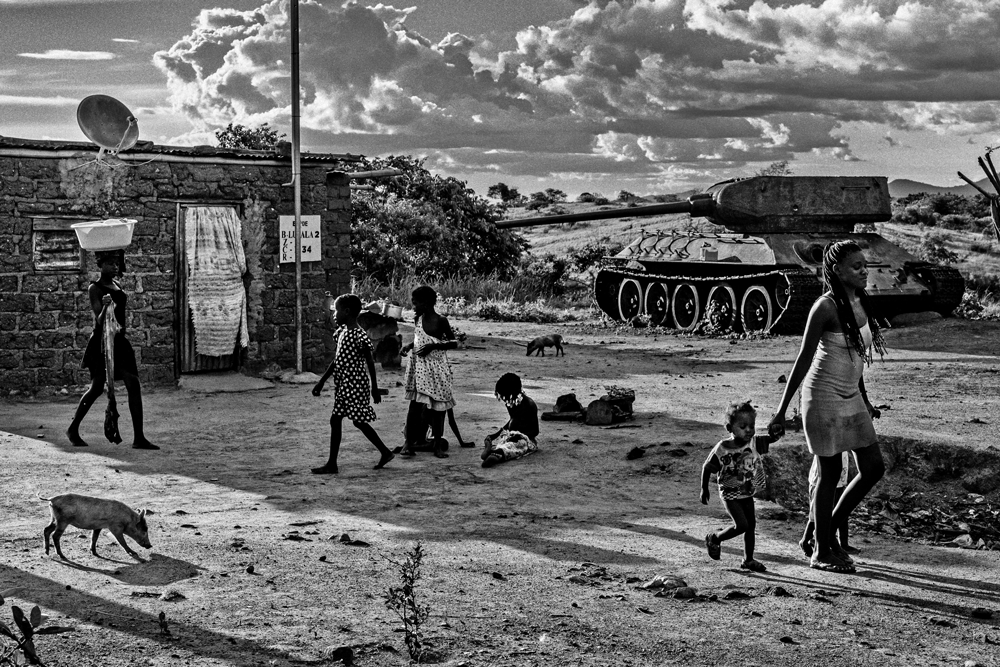
Cuban troops and FAA troops were stationed here and there was a lot of fighting. Then UNITA took over. Soldiers were all around this area and they put landmines around their places. During the first peace agreement in 1991, my father and my brother were both killed. My father took a path to go fishing early in the morning at 9 am and set off a mine and my brother went to help him and he also set off a mine. They were blown apart…
~Village Soba Domingos Francisco Domingos.
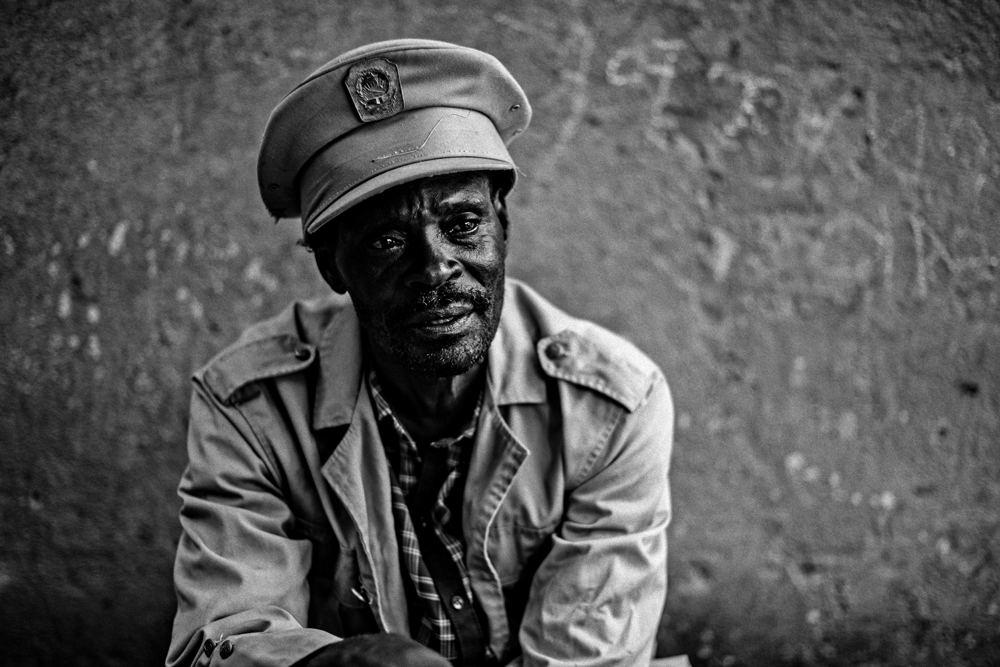
The NPA team found three more landmines during clearance operations in this area. Petroff was visibly moved by the experience as he saw the land being safely used by Eva and her friends. As a Non-Technical Survey (NTS) officer, Petroff is one of NPA Angola’s key members of staff.
Before, I lived and worked in Germany, making spare parts for trucks. I came back to Angola in 1991 and worked with MSF in a feeding center in Malanje. It was a very difficult situation during the war, many people were needing help. I started working with NPA in June 1996 as a deminer at first and was promoted to section leader after nine months. Then I became deputy platoon commander and soon after platoon commander, managing forty deminers as NPA’s capacity expanded. After two years I was sent on an Explosive Ordnance Disposal (EOD) course and then worked as an EOD officer for two years. I really enjoyed my work as an EOD officer as I was always working closely with the community.
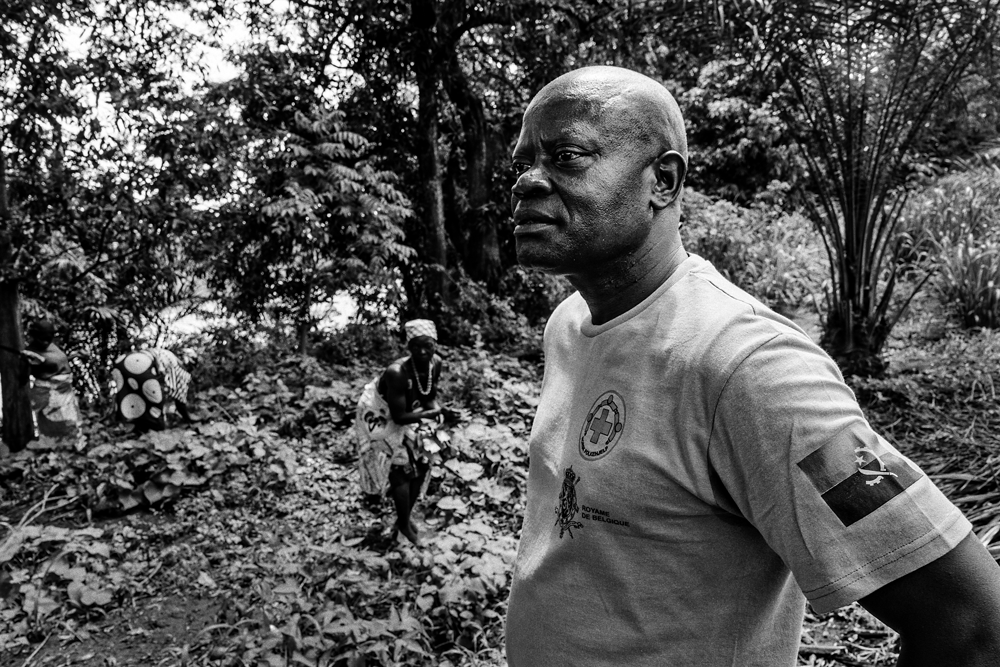
Pedro Ngunza (Petroff), NPA Non-Technical Survey officer, standing at the spot where Eva (in the background) had previously found and moved landmines.
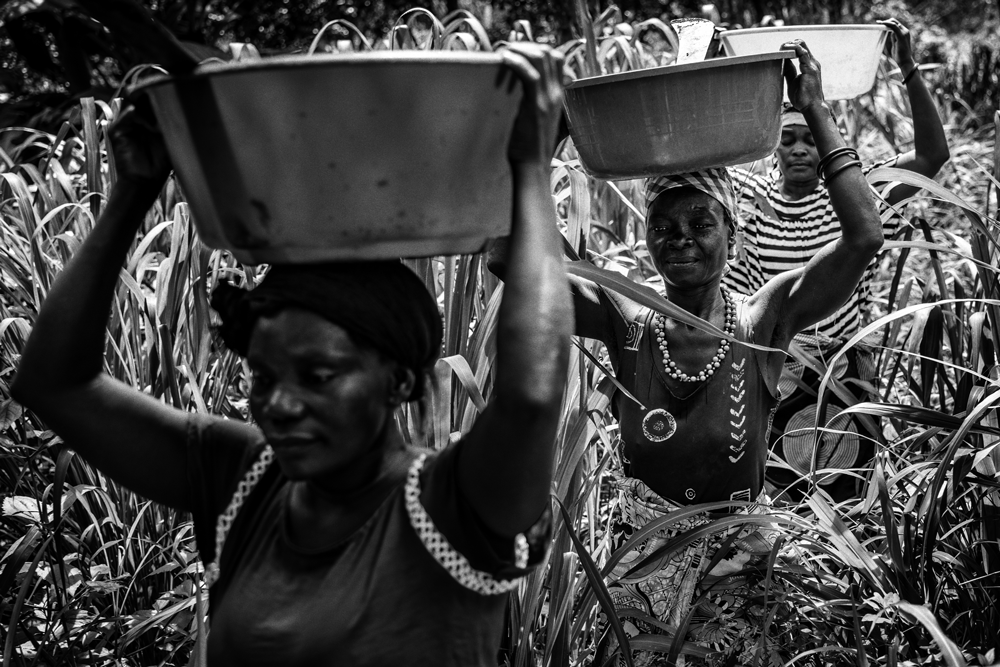
Maria Francisco, Margarida Miguel, and Eva Antonio are old friends who have grown up together. The women discussed their village and their farm and described how their families had to flee from fighting when they were children during the war, “This is where my father and his father are from,” explained Margarida. “It is a beautiful place with good soil and plentiful water from the river. When I was seven years old, I fled from here with my family because of the fighting that happened … we fled to Dondo (a major town in the region) 54 kilometers south of here.” Maria interjected, “We came back five years later when I was twelve when the fighting finished. I remember coming back, well, everything was destroyed, all the houses had been burnt. It took a long time to rebuild. We have been living with the consequences of the war ever since, actually.”
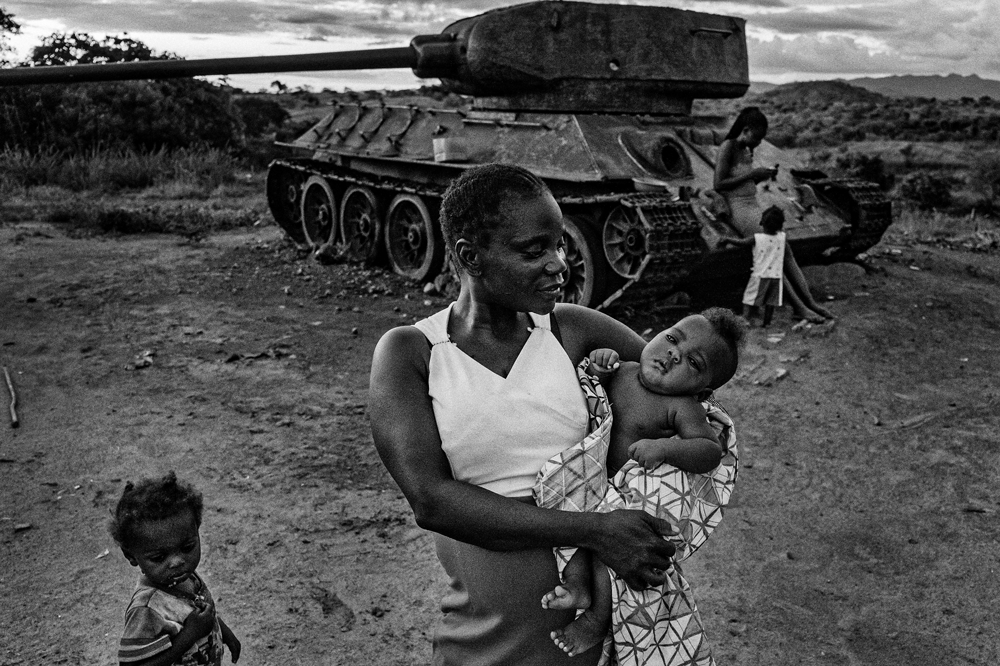
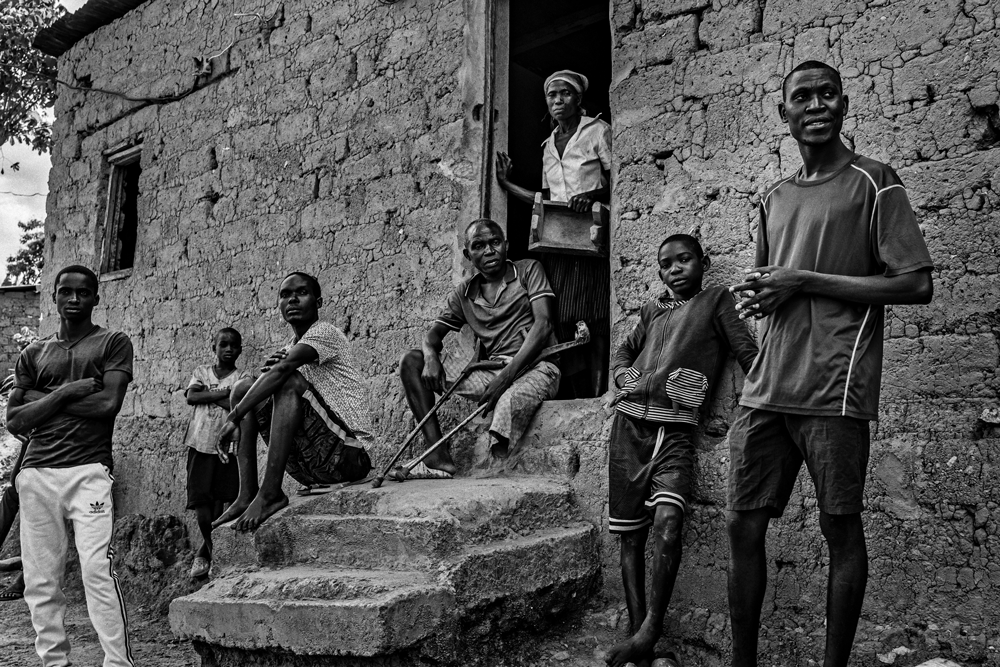
When I stood on a mine,I thought my life was over.
~Landmine survivor Carlos Joao Pedro, 54
Then ten years later my wife passed away and life was even more difficult. I had to sustain the children in this condition. I have spent my life farming to survive. I get some support from the government because when I lost my leg on 4 October 1994, I was a soldier. I was on a probing mission against UNITA, and we were going up a riverbank when it happened. I have never had a prosthesis, no one has ever offered to help me get one. I would like to try one, but I have to go over uneven surfaces, up and down slopes and across rivers to get to my farm—so my prosthetic leg wouldn’t be of much use! I walk two and a half kilometers each way to my farm every day. Sometimes I carry bananas, mangoes, or cassava back as well. I even walk from N’dalatando, which is a long way (nine and a half hours). The kids go to school Monday to Friday but help me on the farm at the weekends. We have always known that the area behind the house is mined because it was a military area. All military areas are mined. The first big fight here was on 25 March 1990. It went on for two years, UNITA controlled the area for that long and we were all stuck here, no one could leave the area. The government forces retook the area in 1993. We need people to clear the minefields, I am so happy NPA is here. I won’t have to worry about the children, and I can let them play and go up and collect mushrooms. Lots will change when we know it is safe. We always feared that area, anyone that went there was taking a big risk.
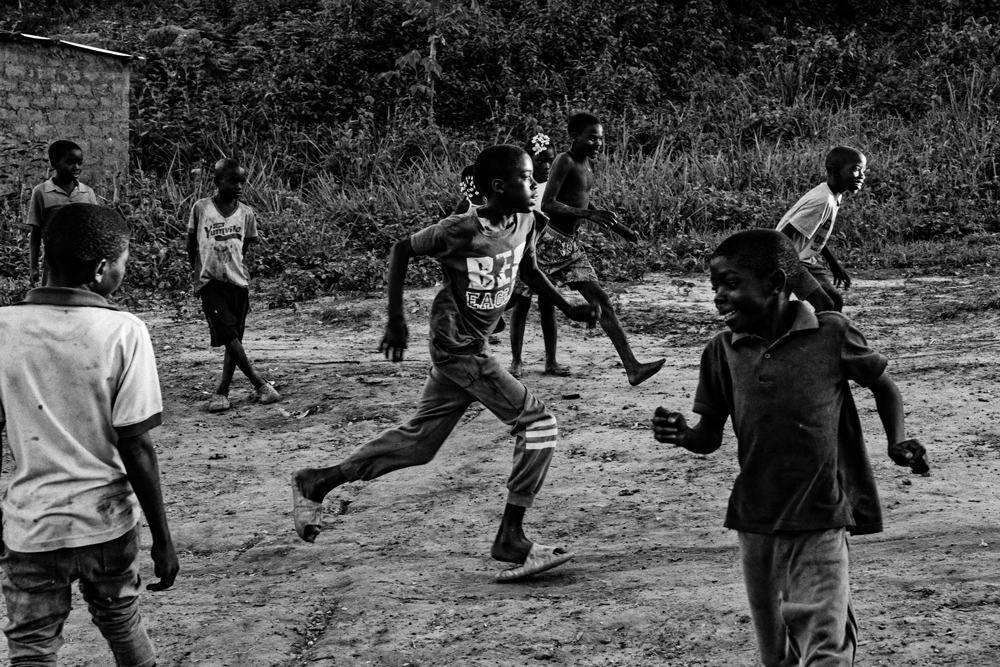
Explosive Ordnance Risk Education
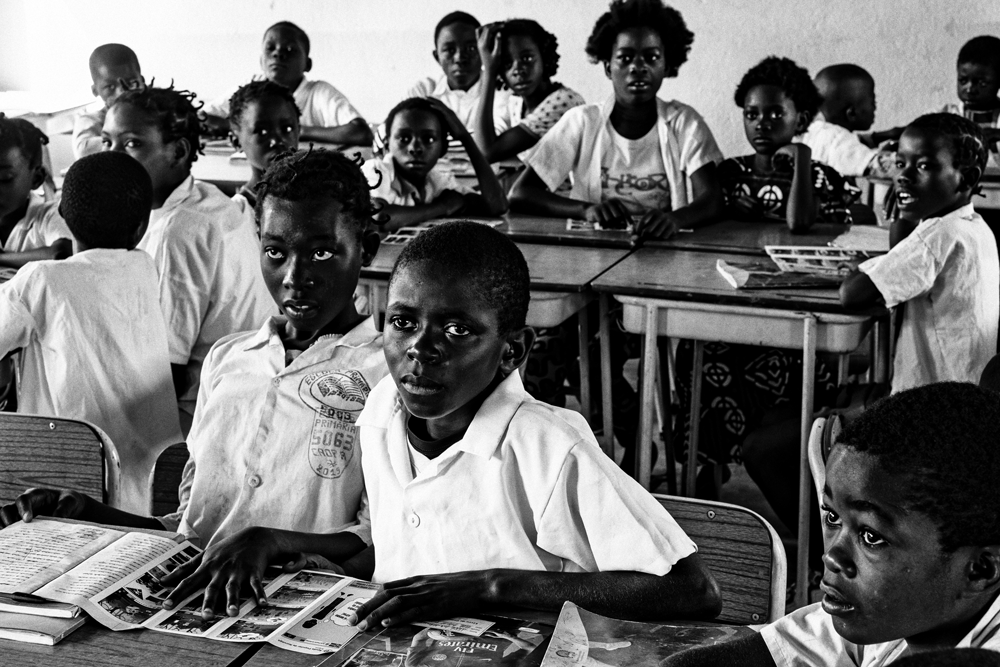
In December 2022, 116,265 square meters was cleared, resulting in the destruction of 115 anti-personnel mines and 440 items of explosive ordnance. Following this clearance, NPA staff Albertina Quinhama and Pedro Ngunza (known as Petroff) are now engaging with villagers to conduct an impact assessment on the land that has been made safe.

At Horacio Felix Machado's school, where he is acting school director, education perseveres amidst danger. Serving 510 students aged five to thirty, the institution relies on the dedication of four permanent and five volunteer teachers to navigate this precarious proximity to such a threat.
We have many students, but few teachers. I am the acting director and have to teach classes as well; that’s not normal. We have students from grade 1 to grade 6. We have one kindergarten class with fifty children. There have been accidents here and we are afraid of the dangerous areas. People have parcels of land here and many people have parcels of contaminated land that they can’t use. Some areas we know are mined, others are suspected. Children look around for scrap metal and have gone into the dangerous area. They have come back home with explosive items which is incredibly dangerous. My son was involved in this. I was so worried when I caught him, I even shouted at him. He found a grenade and brought it home. ~Horatio Felix Machado, acting school director
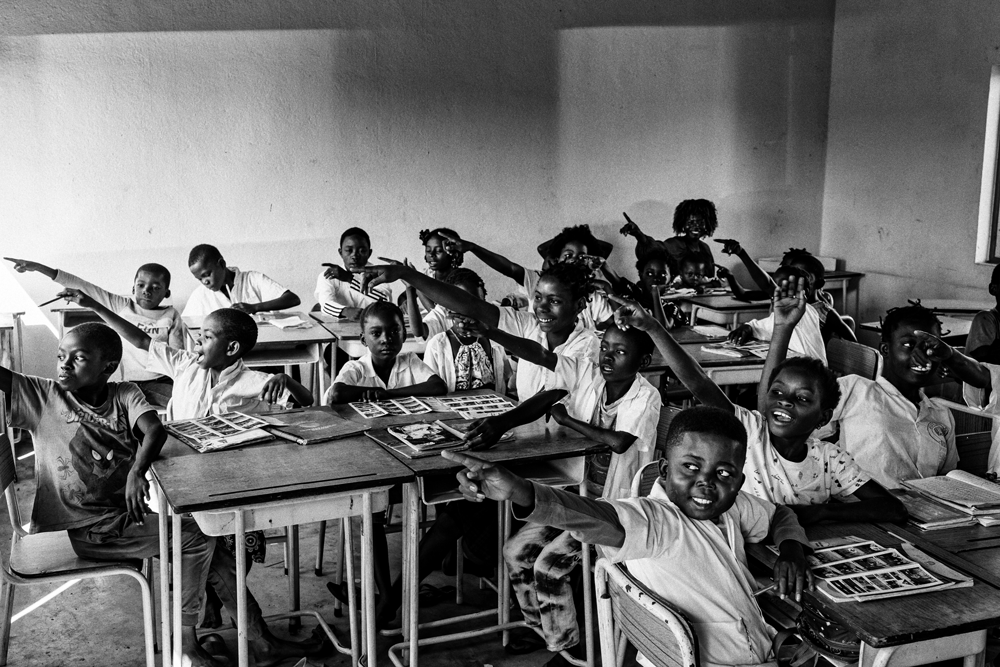
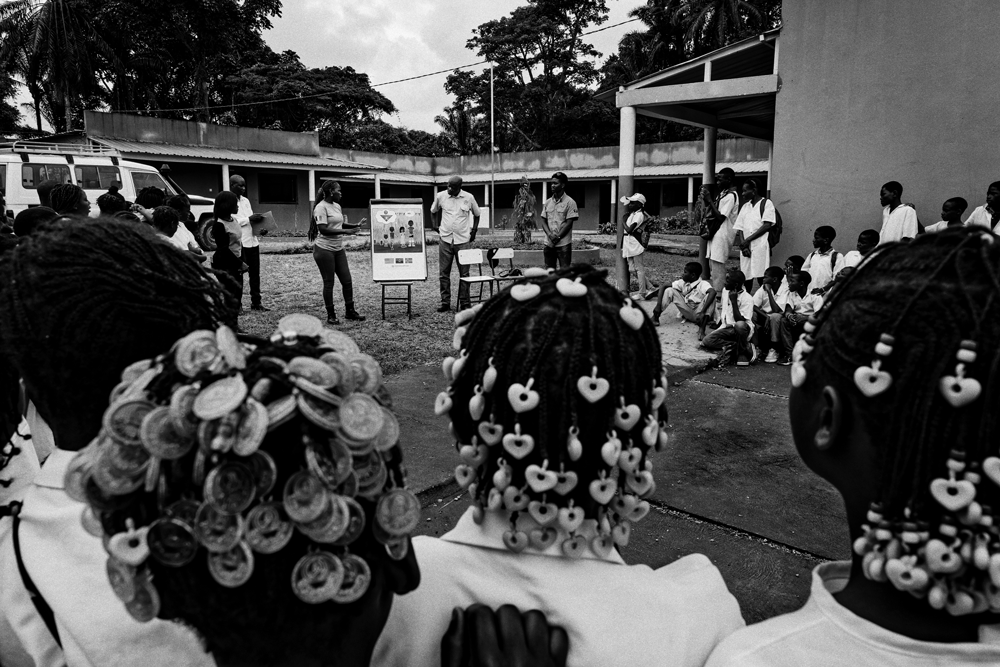
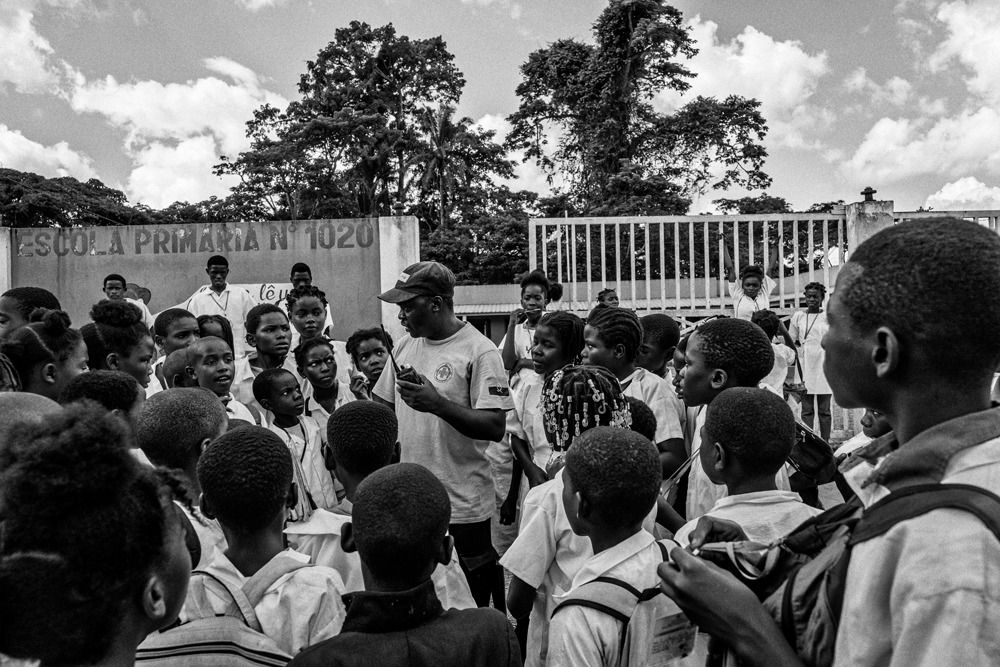
Demining Efforts
In December 2023, NPA discovered a high concentration of mines in the Tuna Sanji minefield. They were laid in a row, 1 meter apart and consisted mostly of PPM2s and some GYATA-64s placed on top of two rocket-propelled grenades (RPGs). The mines were laid to protect the military position situated on top of the hill and have been reinforced like this to create a bigger explosion, to kill as many as possible. There is a great 360-degree view of the area and it was clearly very strategic. It was used as a position by the Portuguese from the 1950s onward and was fought over in the war. There are trench lines all the way round as well, 30–40 meters before the mine row. UNITA wanted the area in part because it is a good coffee growing area and coffee was very lucrative.

We are finding craters where explosions have occurred. We are told that the mines stopped a number of UNITA attacks, but they did manage to take the position and hold it for a few years. NPA started work here on 9 September 2023, and more than 4,000 sq m have been cleared so far. It is a challenging task as the mines are so close together. The deminers need to be monitored constantly as it is dangerous. The vegetation is thick here, it is jungle. The angle is steep, and it is wet and slipp[er]y. The community will benefit and want to use the area for housing and agriculture.
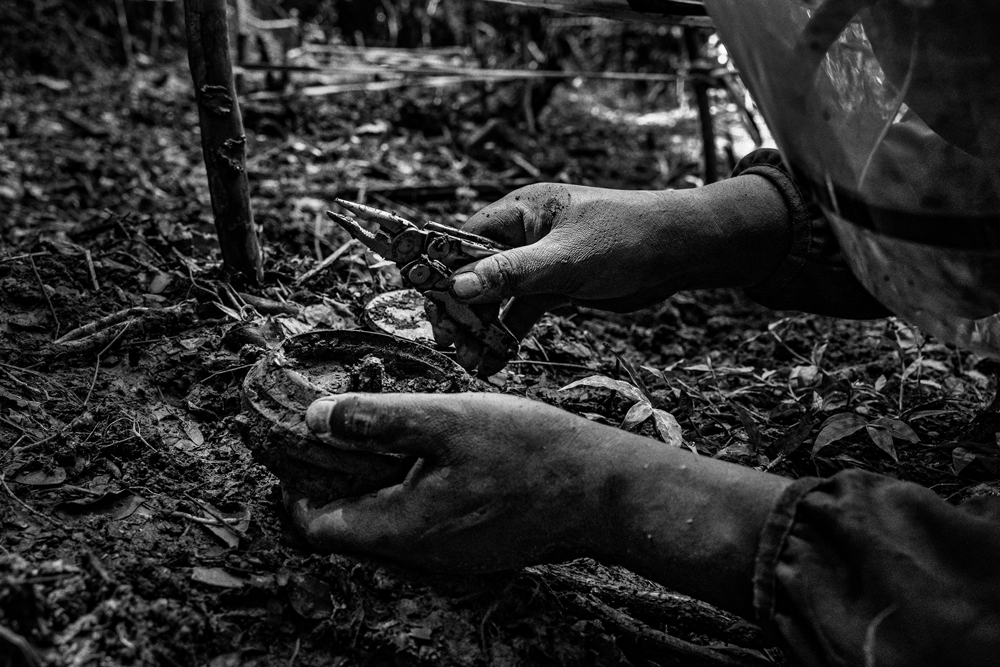
The detonator of a former East German PPM2 landmine is carefully removed. The mine is disarmed and placed next to other mines that have been made safe.
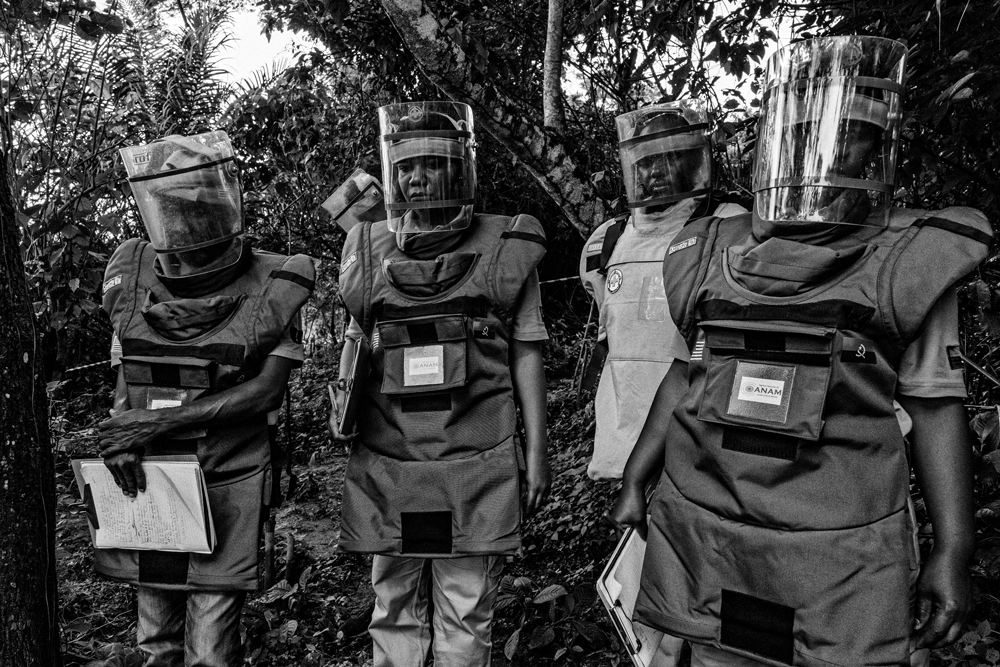
It is important that there is national capacity to manage and coordinate the activities of the mine action sector in Angola. NPA supports Agência Nacional de Acção Contra Minas (ANAM) in developing its capacity to ensure it has the skills and knowledge to regulate, manage, and coordinate mine action activities more effectively with minimal outside technical support.2 Through capacity development, NPA aims to increase national ownership and help mine-affected states ensure an efficient and effective mine action program executed according to established National Mine Action Standards and International Mine Action Standards. Angola is a state party to the Anti-Personnel Mine Ban Convention, which, together with the Oslo Action Plan, calls on states to demonstrate high levels of national ownership and calls for measurable actions that translate to tangible results.
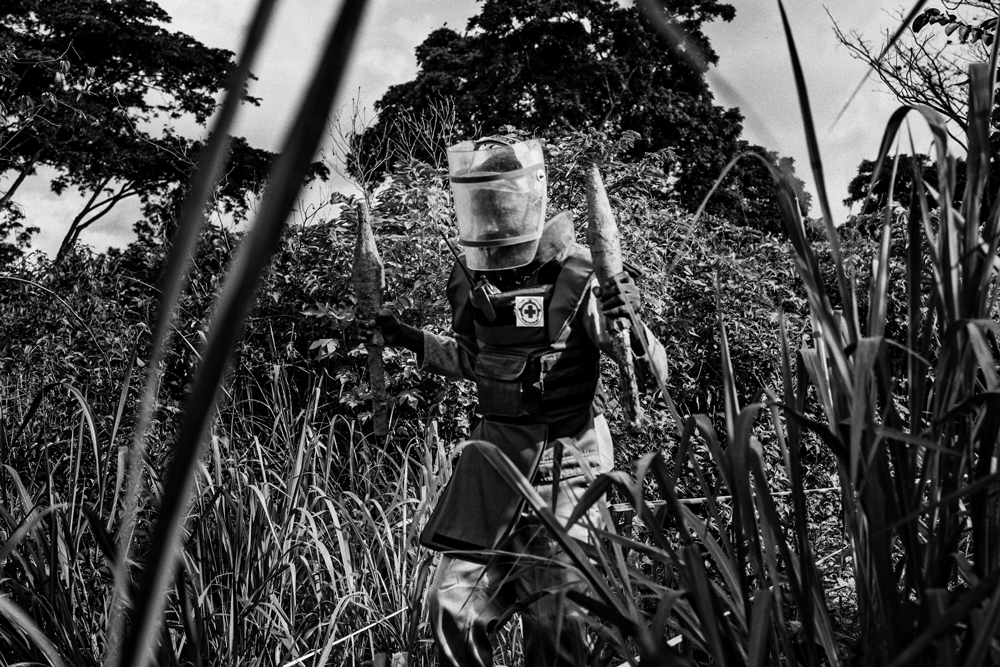
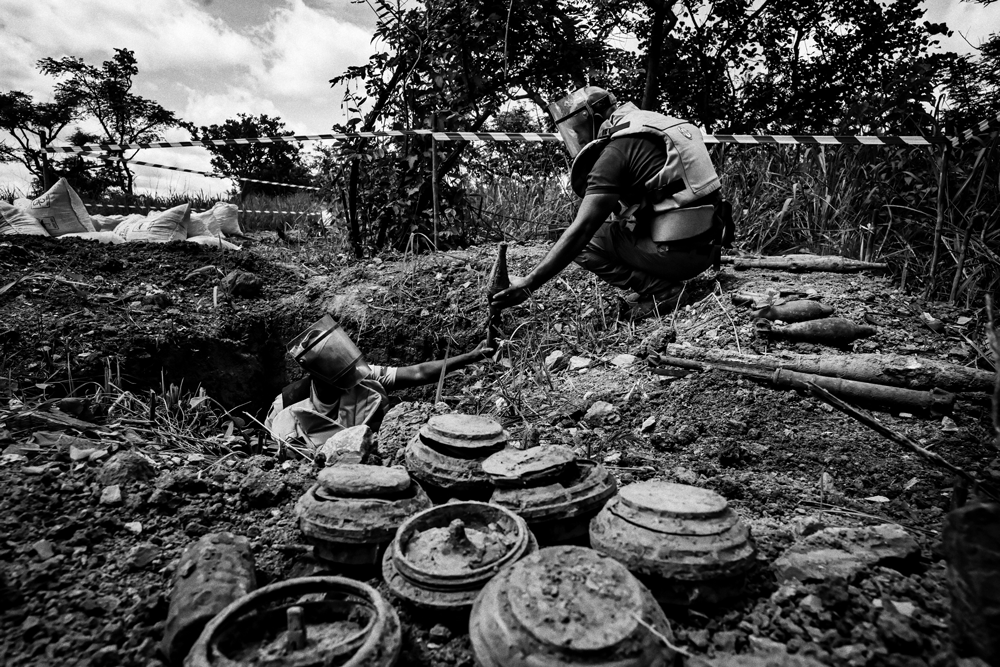
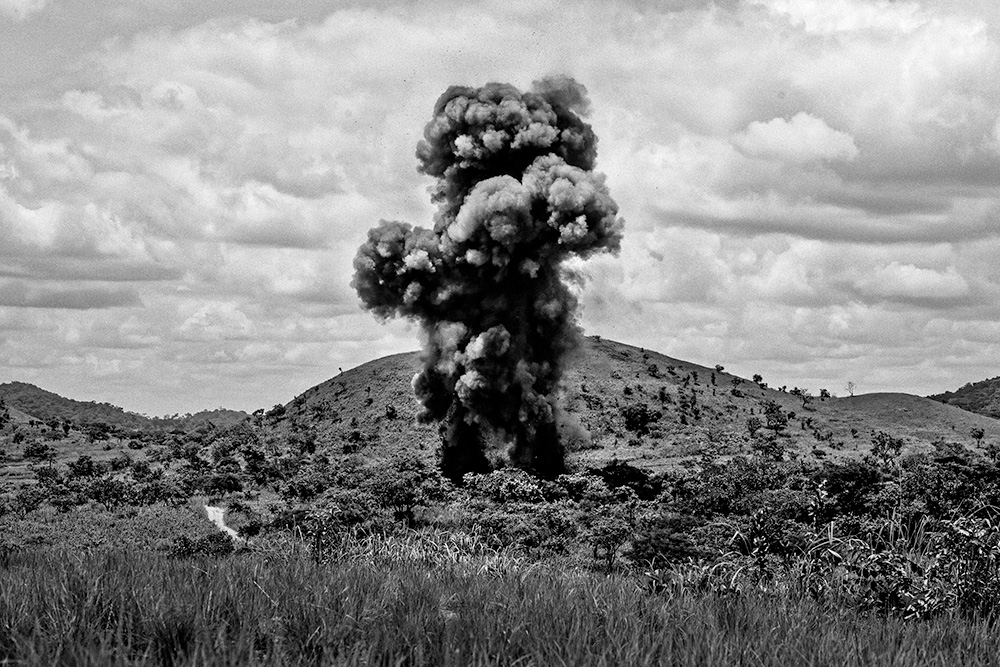
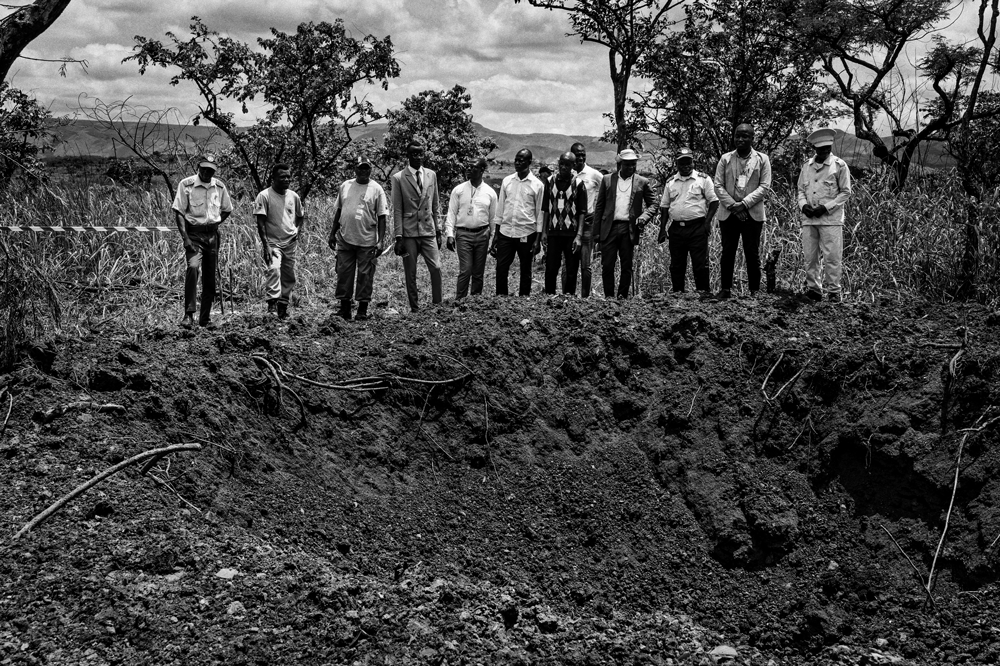
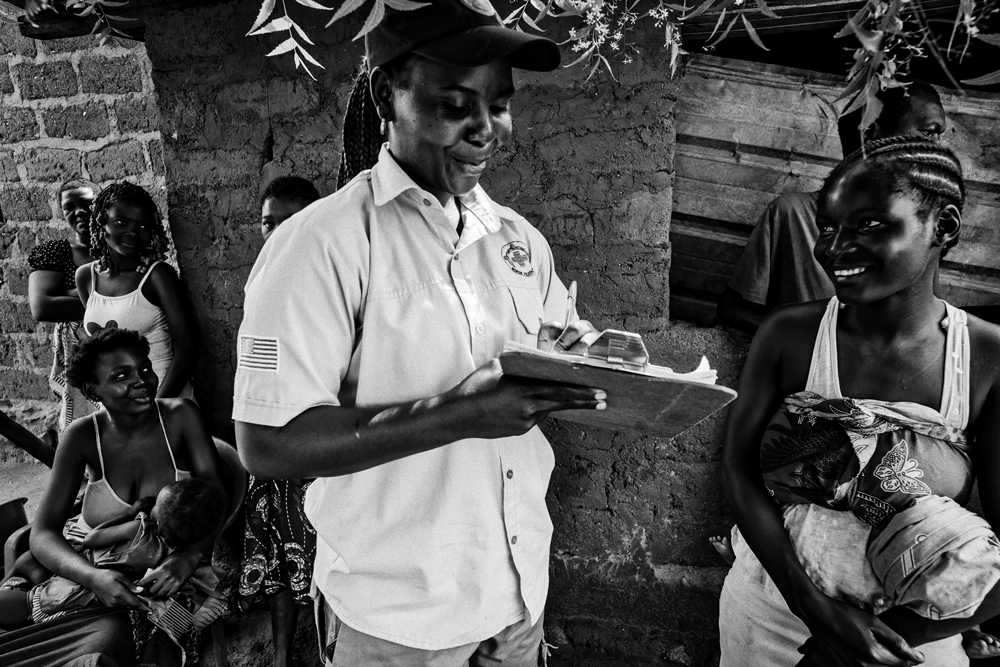
Together Toward Tomorrow
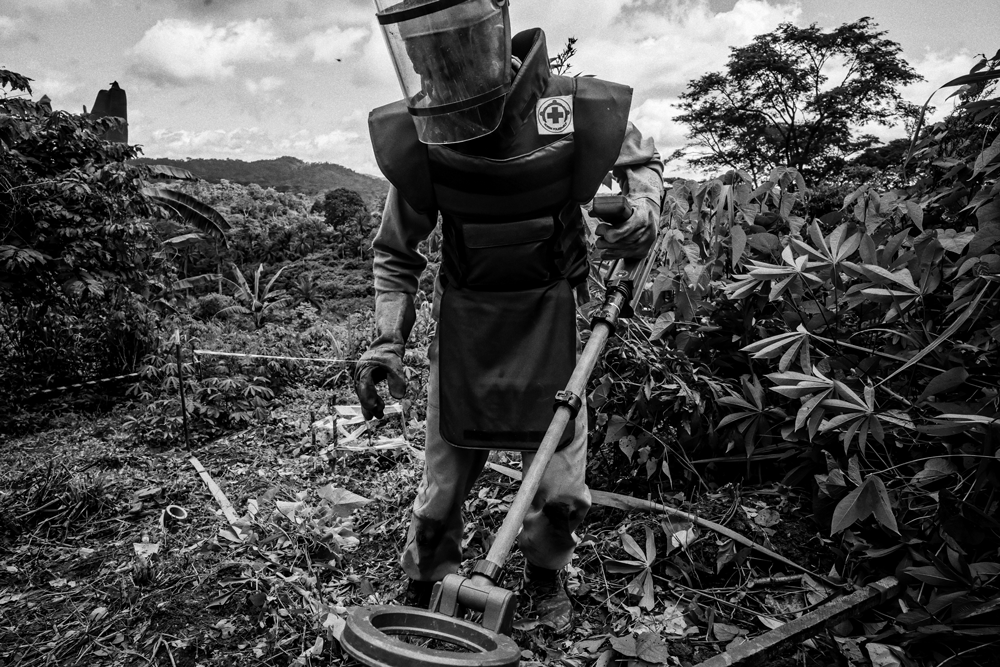
I have been working with NPA since 2011. For the first five years I worked as a deminer. It was good work. I was scared a bit at the beginning. I remember finding my first mine. Now that really was scary, even though I was trained properly, it was still scary. I called out after I had uncovered it in the ground. The supervisor came and told me it was an MAI-75. This is a common mine in Angola and has killed and maimed so many people in my country. My supervisor disarmed the mine and then helped calm me down. Then I picked up my detector and went back to work, checking the ground little by little, using my trowel to check for landmines when I get a signal. I felt really happy. That mine I found could have saved a life, it guaranteed safety in that place. Very satisfying.

NPA’s work in Angola is funded by the Office of Weapons Removal and Abatement in the US State Department's Bureau of Political-Military Affairs; Belgian Ministry of Foreign Affairs; Government of Japan; and Norwegian Ministry of Foreign Affairs.
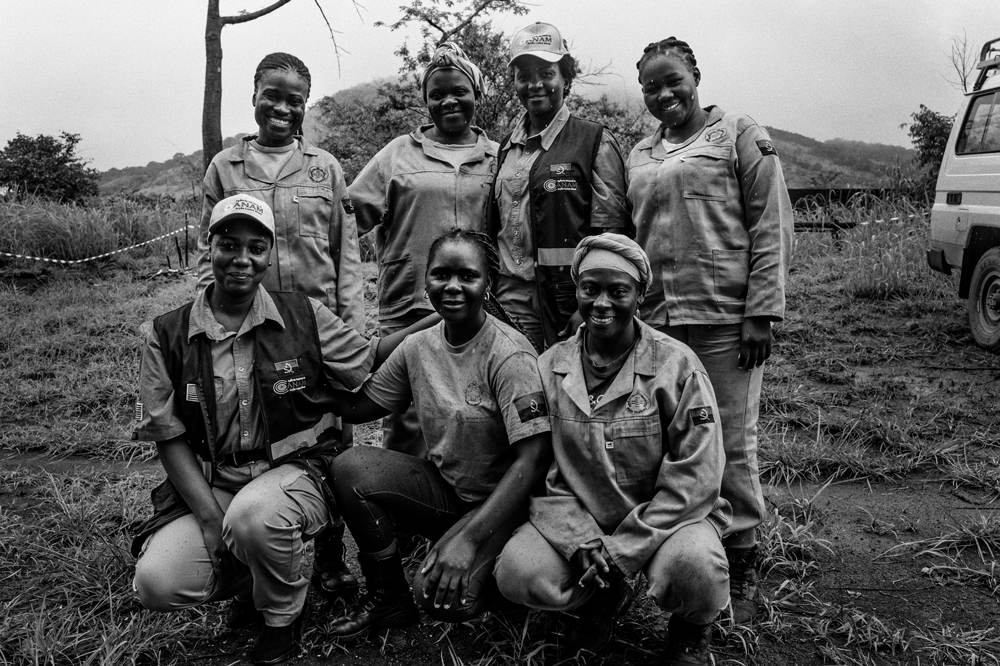
See endnotes below.
 Sean Sutton is an independent documentary photographer, storyteller, and communications professional, working with international nongovernmental organizations (NGOs) and media. His imagery has been published across major media channels worldwide. Along with testimony-based narratives, this has formed the visual and informational content required to communicate the impact and consequences of armed conflict, including human rights, environmental, and developmental issues. The aims are to meet public, institutional donor and policy objectives, to fight injustice, raise funds, and influence change. He has built a strong and active network of media contacts and is represented by Panos Pictures. In order to maximize impact, he combines NGO collaborations with media coverage. Focusing on amplifying the voice of marginalized communities, profiling issues, crisis situations, highlighting injustice, and demonstrating how together we can change things for the better. His work has informed and provided the evidence for advocacy campaigns and actions and his core personal and professional ambition is to influence, through sincere and impactful multimedia journalism.
Sean Sutton is an independent documentary photographer, storyteller, and communications professional, working with international nongovernmental organizations (NGOs) and media. His imagery has been published across major media channels worldwide. Along with testimony-based narratives, this has formed the visual and informational content required to communicate the impact and consequences of armed conflict, including human rights, environmental, and developmental issues. The aims are to meet public, institutional donor and policy objectives, to fight injustice, raise funds, and influence change. He has built a strong and active network of media contacts and is represented by Panos Pictures. In order to maximize impact, he combines NGO collaborations with media coverage. Focusing on amplifying the voice of marginalized communities, profiling issues, crisis situations, highlighting injustice, and demonstrating how together we can change things for the better. His work has informed and provided the evidence for advocacy campaigns and actions and his core personal and professional ambition is to influence, through sincere and impactful multimedia journalism.

